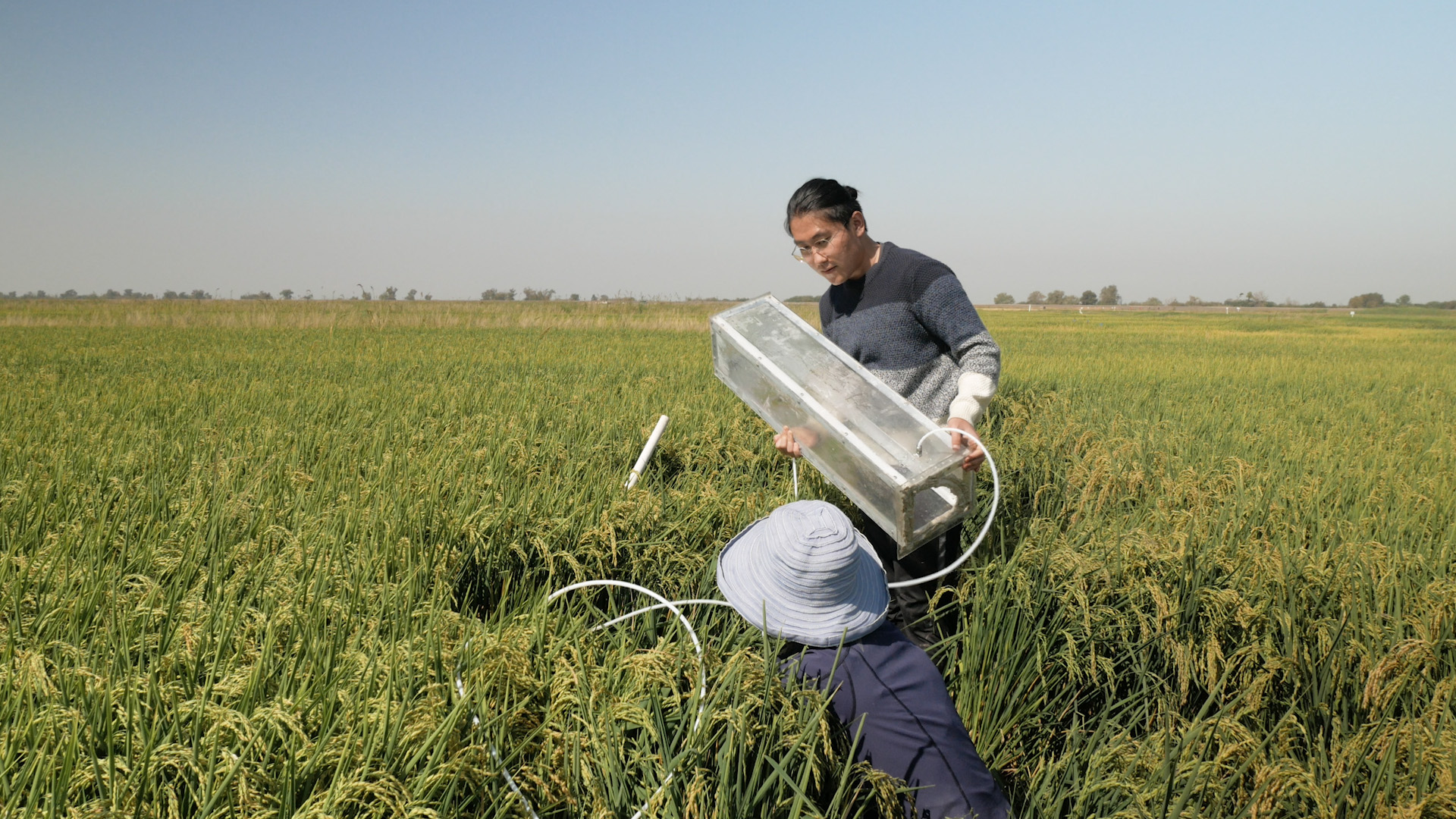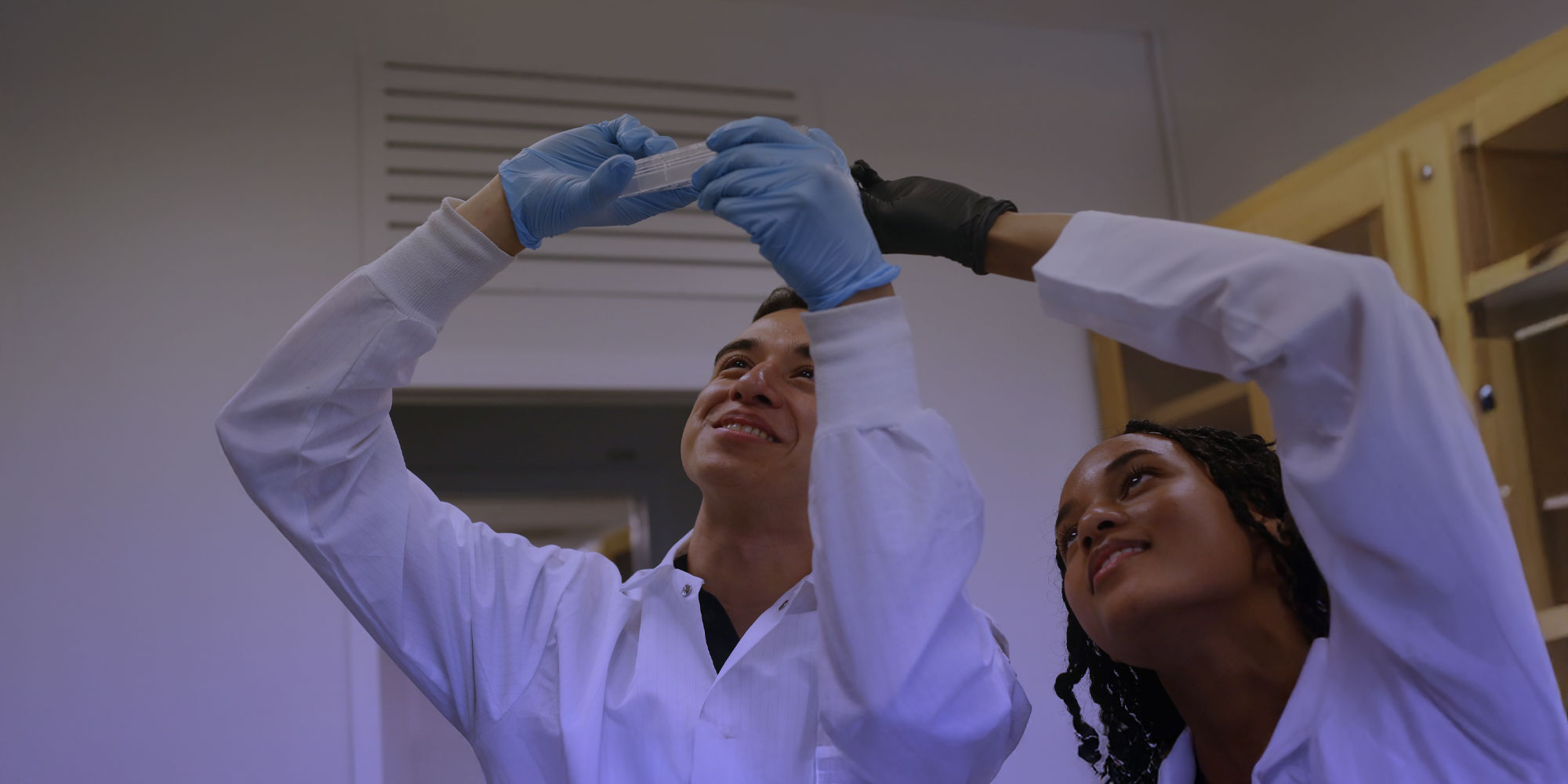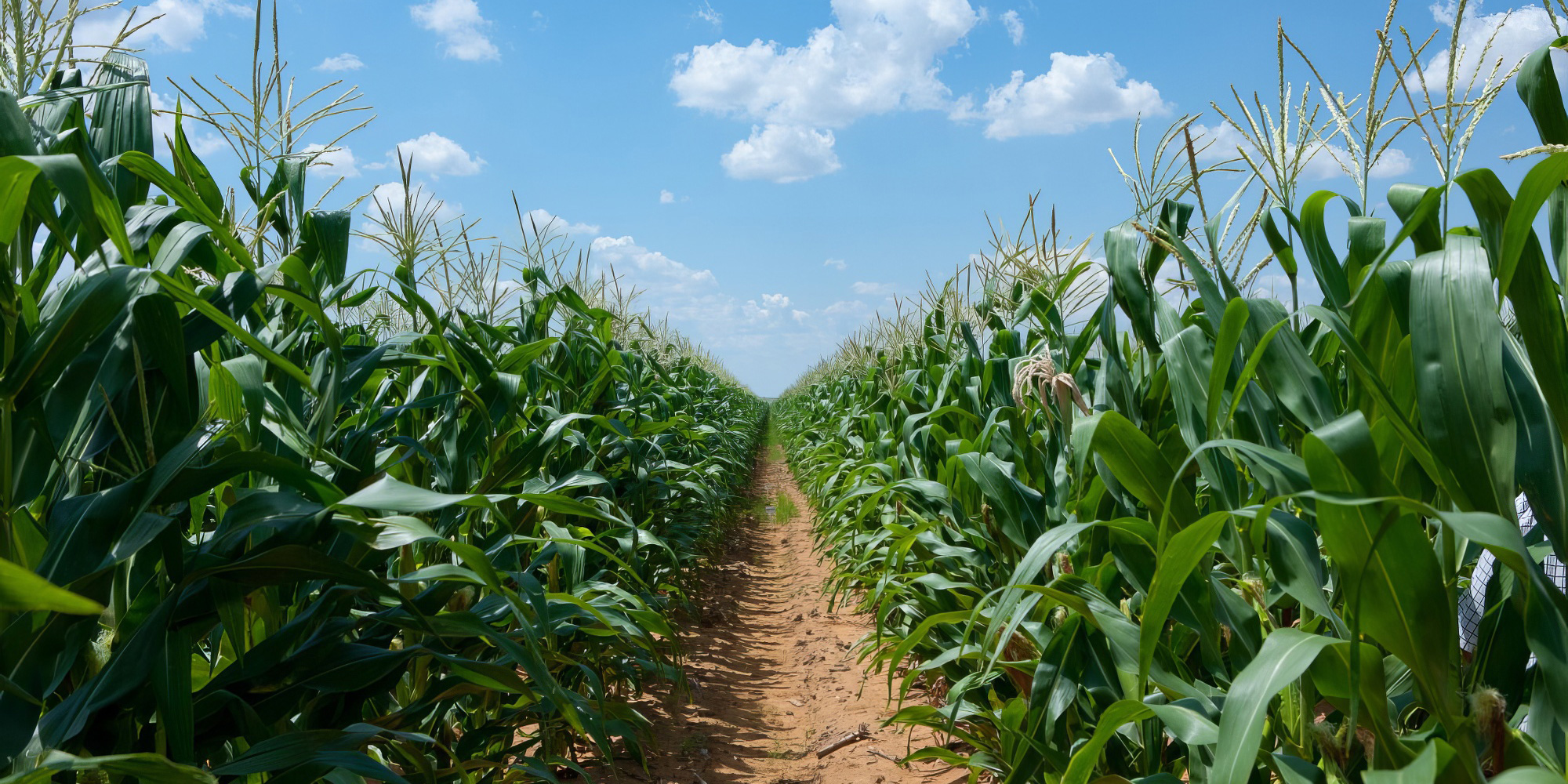
Inside Genomics: Microbes Meet Climate Change
Rice is typically grown in flooded paddies where methane-producing microbes thrive, and rice cultivation is a significant source of greenhouse-gas emissions. Postdoctoral researcher Bethany Kolody and graduate student Jack Kim discuss their project in IGI Microbiology Director Jill Banfield lab’s: exploring the genomes of microbes in rice fields. If we get to know the microbes in the soil, can we intervene for a healthier planet? Watch the first video in our Inside Genomics series and see the transcript below.
Learn more about IGI’s climate work, get the scoop on metagenomics, and get a peek inside the mind of Jill Banfield.
Video transcript (English – see below for Spanish):
When you look at dirt, you might not know you’re looking at a complex, living community. But the dirt from these rice roots contains millions of microbes — and they just might hold the key to stopping a significant source of greenhouse gas emissions.
Rice is a staple crop for more than half the world’s population. But the way we grow rice is responsible for 12% of food-related greenhouse gas emissions globally, second only to beef. And rice emissions are mainly methane – a greenhouse gas that can trap 25 times more heat than carbon dioxide. But the microbes in the soil below just may hold the key to changing this.
Rice is typically grown in paddies that are flooded to keep weeds from growing. This pesticide-free weed control has a lot of benefits — but it also affects soil microbes.
When the paddies are flooded, it creates an anaerobic environment, which means there’s no oxygen or very low oxygen in the soils, and that allows certain microbes to grow that produce methane.
Just like our diet or hygiene habits can change our microbiome, when paddies are flooded, the soil microbiome changes.
But which microbes are these exactly? Bethany Kolody, a postdoc working with IGI’s microbiology director Jill Banfield, is taking the lead on a new project to find out.
Bethany Kolody: “The big question that we’re trying to answer is, What is the genetics behind the methane emissions that come out of rice paddies? So we’re going to look at all of the microbes and their genomes that are associated with rice paddies over the course of a full season.”
To get to know these microbes – and the helpful microbes that can eat methane – the Banfield lab team is taking soil samples here at the Rice Experiment Station in Biggs, California. They’ll take samples over the course of a growing season, seeing how the community of microbes changes through the rice life cycle.
The team is taking soil cores at different depths to see how the types of microbes change as you go deeper. they’re especially interested in the microbes around the roots of the rice plants.
Bethany Kolody: “We really wanted to know which microbes are directly interacting with the plants. And so the microbes that are on the root of the plant–they’re called the rhizosphere microbes. So we would pull a single plant, and we would section off the root, cut the root, and wash off all of the soil that’s directly associated with the root.”
The team is also looking at how soil methane escapes into the atmosphere – either from the soil itself, or through the plant, which acts as a pipe.
In the field, they measure methane escape from plants with an instrument called a Picarro.
Jack Kim: “We’re basically having chambers that have the plants in them and also control chambers that don’t have plants in them. And we are comparing the two to show how important the role of a plant is in acting as a path for methane to escape.”
When the team gets back to the lab, they’ll use a special technique pioneered by the Banfield lab.
Bethany Kolody: “In the Banfield lab, we’re really experts on metagenomics. So metagnomics–you probably know about your genome or the human genome, or maybe you’ve done 23andMe. Your genome is the set of all of your DNA in your body for a single cell, it’s the same for every cell. And a metagenome is when you take a sample, so for example a soil sample, and you just sequence everybody’s DNA–so all of the microbes in that piece of soil. And then you have to take it back to the computer and piece all of the little pieces together like a puzzle and figure out who’s who. But once you do that, it’s a really good tool to see what microbes are doing and what microbes are capable of doing.”
The team is using an additional technique to capture a snapshot of which genes are turned on right when they collect the plants.
Knowing who’s there and what they’re doing helps paint the picture of how the microbes work together to form a soil ecosystem. Once we know more about these microbial communities, it might be possible to manipulate them to reduce methane output.
Bethany Kolody: “Because we’re working with rice, which is a major food staple across the globe, anything that we learn from this small scale could really be scaled up to make big changes all over the world.”
Rice cultivation is a remarkable achievement that has fed generations around the globe – and with new tools, we can keep feeding a growing population without contributing to climate change.
Transcripción de vídeo (Español)
Cuando observas tierra, puede que no sepas que estás observando una comunidad viva y compleja. Pero la tierra de estas raíces de arroz contiene millones de microbios – y puede que ellos posean la clave para detener una fuente significativa de emisiones de gases de efecto invernadero.
El arroz es un cultivo básico para más de la mitad de la población mundial. Pero la manera en que cultivamos el arroz es responsable por 12% de las emisiones de gases de efecto invernadero relacionadas a alimentos globalmente, siguiendo sólo a la carne de res. Las emisiones del arroz son principalmente metano – un gas de efecto invernadero que puede atrapar 25 veces más calor que el dióxido de carbono. Pero los microbios en el suelo puede que posean la clave para cambiar esto.
El arroz típicamente se cultiva en arrozales que están inundados para prevenir el crecimiento de hierbajos. Este control de hierbajos libre de pesticidas tiene muchos beneficios, pero también afecta a los microbios en el suelo.
Cuando los arrozales están inundados crean un ambiente anaeróbico, lo cual significa que no hay oxígeno o hay niveles muy bajos de oxígeno en el suelo y eso permite crecer a ciertos microbios que producen metano.
Tal como nuestra dieta o hábitos de higiene pueden cambiar nuestro microbioma, cuando los arrozales se inundan, el microbioma del suelo cambia.
¿Pero cuáles microbios son estos exactamente? Bethany Kolody – una investigadora postdoctoral que trabaja con la directora de microbiología del IGI, Jill Banfield – está liderando un nuevo proyecto para investigar esto.
Bethany Kolody: “La gran pregunta que estamos intentando responder es cuál es la genética detrás de las emisiones de metano que salen de los arrozales, así que vamos a observar a todos los microbios – y sus genomas – que están asociados a los arrozales en el curso de una temporada completa.”
Para conocer estos microbios – y los microbios útiles que pueden consumir metano – el equipo del laboratorio Banfield está recolectando muestras de suelo aquí en la Estación de Experimento de Arroz en Biggs, California. Ellos tomarán muestras durante el curso de una temporada de cultivo, observando cómo la comunidad de microbios cambia durante el ciclo de vida del arroz.
El equipo está tomando muestras del núcleo del suelo a diferentes profundidades para observar cómo los tipos de microbios cambian a medida que aumenta la profundidad. Ellos están interesados especialmente en los microbios alrededor de las raíces de las plantas de arroz.
Bethany Kolody: “Nosotros realmente queríamos saber cuáles microbios están interactuando directamente con las plantas y los microbios que están en la raíz de la planta se llaman microbios de la rizósfera. Así que nosotros tiramos de una planta individual y dividimos la raíz, la cortamos, y removemos toda la tierra que está asociada directamente con la raíz.”
El equipo también está investigando cómo el metano del suelo escapa hacia la atmósfera – si es a través del suelo mismo o a través de la planta que actúa como conducto.
En el campo, ellos miden el escape de metano de las plantas con un instrumento llamado un picarro.
Jack Kim: “Básicamente tenemos cámaras que tienen a las plantas dentro y cámaras control que no tienen plantas dentro de ellas y estamos comparándolas para demostrar cuan importante es el rol de una planta en actuar como una vía para el metano escapar.”
Cuando el equipo regrese al laboratorio usarán una técnica especial iniciada por el laboratorio Banfield.
Bethany Kolody: “En el laboratorio Banfield somos expertos en metagenómica. Así que metagenómica; tú probablemente sabes acerca de tu genoma o en genoma humano o tal vez has hecho 23andMe. Tu genoma es el conjunto de todo tu ADN en tu cuerpo para una sola célula, es el mismo para toda célula, y un metagenoma es cuando obtienes una muestra, por ejemplo una muestra de suelo y simplemente secuencias el ADN de todos, así que todos los microbios en ese pedazo de suelo. Y luego tienes que llevarlo de vuelta a la computadora y juntar todas piezas como un rompecabezas y descifrar quien es quien, pero una vez hagas eso, es una muy buena herramienta para observar qué están haciendo los microbios y qué son capaces de hacer.”
El equipo está utilizando una técnica adicional para capturar una imagen de cuáles genes están encendidos correctamente cuando recolectan las plantas.
Saber quienes están ahí y qué están haciendo ayuda a pintar el cuadro de cómo los microbios trabajan juntos para formar un ecosistema en el suelo. Una vez que sepamos más sobre estas comunidades microbianas, puede ser posible manipularlas para reducir la emisión de metano.
Bethnay Kolody: “Como estamos trabajando con arroz, el cual es un alimento básico muy importante a través del globo, cualquier cosa que aprendamos a pequeña escala realmente puede aumentarse proporcionalmente para causar grandes cambios en todo el mundo.”
El cultivo de arroz es un logro notable que ha alimentado a generaciones alrededor del mundo y con nuevas herramientas podemos continuar alimentando una población creciente sin contribuir al cambio climático.
You may also be interested in

Protected: Announcing the Rising Stars Program: A New Collaboration Between the IGI and Historically Black Colleges and Universities

Breakthrough Method Enables Rapid Discovery of New Useful Proteins

From California to Kenya: The 2025 Cohort of the CRISPR Course for African Plant Scientists
